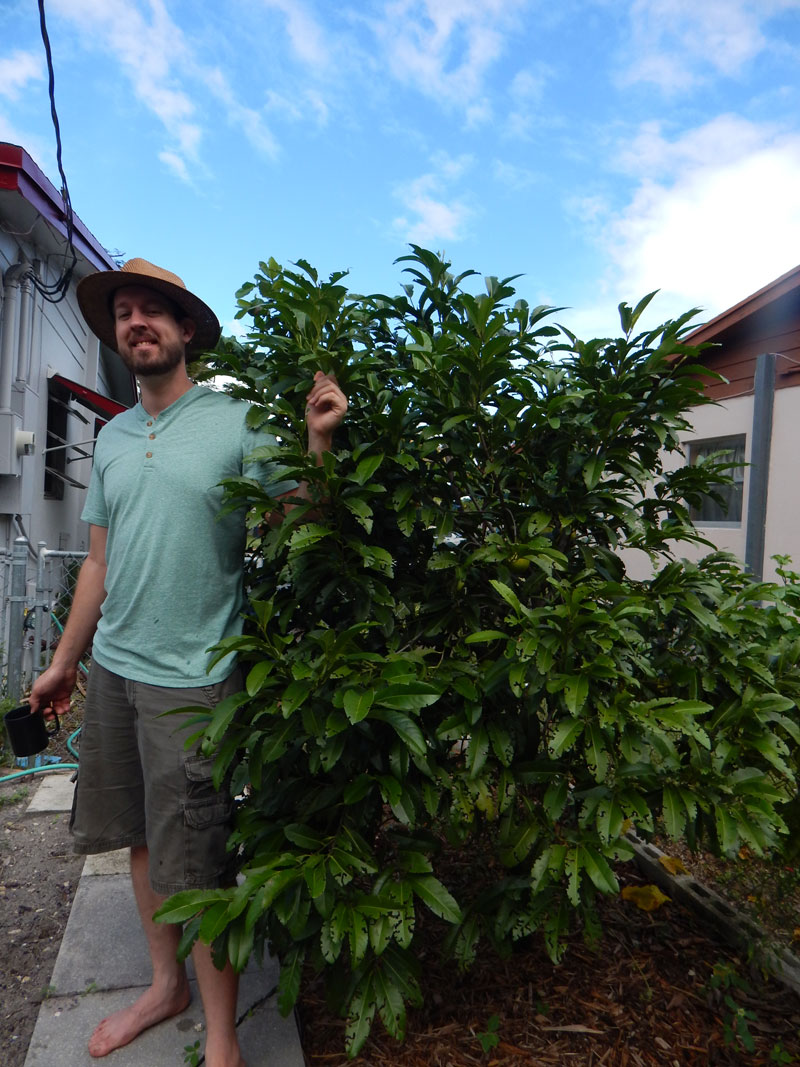On Monday I posted this video on keeping fruit trees small:
Oak Summit Nursery comments:
This is a great video. We’re on the Canadian prairies, and here we basically need to use full sized rootstocks for fruit trees like apples just to have the vigor and cold hardiness, also the growing season in short. Yes I do have an old apple tree that’s 35 feet tall, but only because it wasn’t pruned – sure they can get that large. All of the standard “full sized” trees I’ve planted in years since have been really easy to keep small with pruning and training, selecting some main scaffolds and keeping them low and spreading, and the trees can be close together. My orchard was planted in a forest, the natural vegetation before I started was all aspen (tall but they don’t produce much shade), choke cherry, saskatoon, and small oaks. Instead of clear cutting the trees to make room, I just made paths around them, and used small existing clearings to plant my fruit trees. Instead of removing small oaks I decided to make them into Niwaki, or garden trees. Yes the oaks can be 50′ tall, but I’m going to keep them at 5-6′ with pruning, and give them cool artistic shapes. Same with pines, I’ve added them around the orchard and train the with cool bends, Niwaki is like an in ground larger bonsai. The few tall aspens that might eventually block some light will be reduced like “syntropic agroforestry” style, I can keep the tree and just remove branches, pollard it down to size and add their biomass to the ground – ok we don’t have bamboo or bananas here to chop and drop but it’s the same idea. Most of the light in the summer is at a high angle, so dense spacing is fine and the trees can still get full sun even though they’ve been integrated into a forest garden. I enjoy all of your ideas about keeping the trees the shape and size you want. One day I can imagine step over espaliers around my garden paths. There’s another style of training we’re trying here in zone 3 called Russian arctic stanza, where you train an apple tree along the ground so it can be covered up by snow for the winter and zone push.
You can do a LOT with trees! A lot more than you think.
In the video I cover methods including festooning, espalier, pruning, multi-planting trees and more.


5 comments
Hi David! I love this small fruit tree idea. I bought the book you recommended, read it all last summer, but now I can’t find it. I have a question. Can you prune the tree before you plant it? I have an apple tree we bought yesterday, but we will be getting our last (hopefully) cold snap, 34 degrees for a couple of hours, this weekend. I want to prune the tree before it starts leafing out, right? I’m in a similar climate, Gulf Coast of Texas. This was one of the only trees that didn’t have leaves, and amazingly it seems to be the best one for here (150-200 chill hours and self-pollinating). To prune or not to prune before planting.
You could prune it.
Would you leave an ancient walnut with a wild grape and honeysuckle that reach to the top (about 80ft) or cut it to let in more direct southern light. My goal is
a food forest but in rows.
If I could keep that tree I would.
Do you (or your readers) recommend mid-summer fruit tree pruning to limit tree height? Or is that too much of a stress to the fruit tree? If it is too stressful (and it seems to me that it is, based on what happened to my apricot tree this summer), can I prune it down to a manageable height in the winter with the expectation that it will not fruit with much or any abundance in the next summer?
Thank you for your time.
Comments are closed.